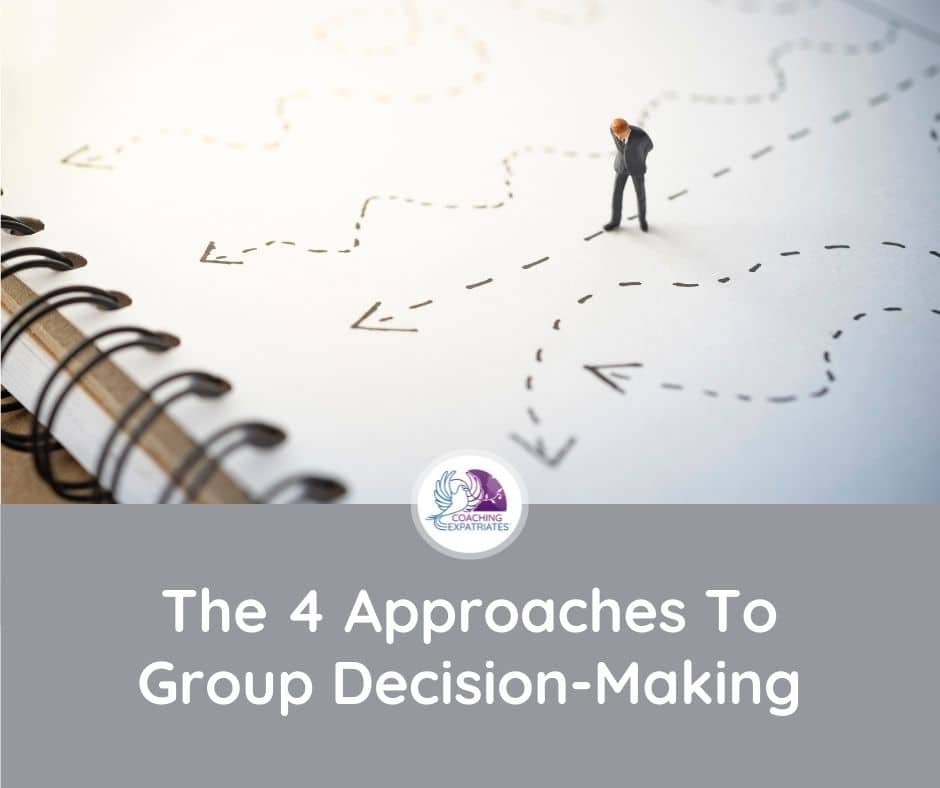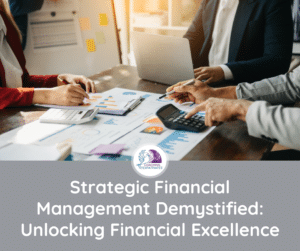In most companies worldwide, there are 4 approaches to group decision-making that are wildly used in decision workflows. Today I want to share these main approaches for group-decision making and when it’s best to use each.
How many times in your career were you in a situation where a big decision had to be made, and you had to decide who should be part of that decision-making?
The question “who else should we involve in this?” frequently comes up. Whenever it does, it is an invitation for decision-making.
As you read in our post How To Make Better And More Impactful Decisions when we crowd our decisions with too many people, we might be setting ourselves for failure. The right balance is always a “must-have.”
So you see, there is a catch in the decision-making theory. The catch is that you might know the theory, but if you don’t know how to best apply it, your knowledge could go down the drain.
Let’s learn each of the approaches and also how to best apply them.
4 Approaches To Group Decision-Making
Imagine you need to make a business decision, and you will need to involve more people in order to make this decision. At the same time, you want this to happen fast and avoid being trapped by decision fatigue.
You can use 4 main approaches in this situation:
- Autocratic Decision-Making
- Participatory Decision-Making
- Consensus-Based Decision-Making
- Democratic Decision-Making
Each of these approaches outlines a different type of process in involving people. Each method is also better used in certain situations and decisions than others.
The general outline is like this:
- What is the impact of this decision?
- Do I have the full authority to make this decision alone?
- If I make the decision by myself, will I hurt someone’s ego or pride?
- How time-sensitive is this decision?
- Is buy-in important for the results of this decision?
Now let’s see what these approaches look like.
Autocratic Decision-Making
In this approach, the decision is top-down. Basically, the leader makes a decision on behalf of the group and then informs the group about the decision. A buy-in is not seen as an important aspect of making this decision.
This type of process is best used when you have a low-impact decision that is relatively urgent, and you have the authority to make it.
For example, you’ve been discussing the need to reduce back-office expenses with other executives and the finance head. All departments are feeling the pressure. You receive a call from a water delivery company promising to reduce 5% on this cost budget line. You talk to the procurement folks, and they inform you that this vendor is one of the pre-approved preferred providers. So, since you have the level of authority for this, you make the decision to change the water delivery to this vendor, without consulting anyone. You just send a newsletter from your department in the site portal sharing the good news.
In this example, the decision was one of low impact, but was relatively urgent, as you had a time-limitation to take advantage of the promotion. Also, you knew that this decision was under your authority, and no feelings of pride would be hurt if you made the decision by yourself.
Participatory Decision-Making
The participatory approach is when the leader collects information, data, and opinion from other leaders, stakeholders, or team members, to gain their perspective before making the final decision.
Although still top-down, it does not feel so, as the leader took into account opinions, facts, and data from other group members.
This decision approach is for bigger decisions that greatly impact the department or entire company. Therefore, it needs further consideration and perspective in the analysis. The sense of urgency in making the decision is also reasonably high, so you have to make the best decision possible in a limited timeframe.
For example, you are working on reducing costs by changing your PABX phone system to a CaaS. You are looking into numerous providers but need input from other users to create the best criteria selection. You decide to bring the tech support and service team members, to hear their opinions and input, as they are heavy users and will be highly impacted by any changes. They help you to drill down their biggest pains with the current system, their “must-haves” and “nice-to-haves.” With this, you collected information to make a better decision.
In this example, although any of the consulted members made the decision with the leader, they feel a sense of participation, as their needs and opinions are being heard. This kind of decision is one that, once implemented, buy-in will be crucial for best results. Buy-in happens faster if you heard feedback beforehand and know you are implementing something aligned with this feedback. The buy-in narrative can be more catered to what you already know of the requests.
Consensus-Based Decision-Making
This approach of decision-making means everyone in the decision-making process has a vote and can influence the decision, and only by having 100% of “voters” aligned and on board with a decision will it be made.
Note that this approach takes a lot of time to complete. When I say a lot, I mean A LOT.
This approach is commonly used for very large impact decisions that do not have any time constraints. It is also very commonly used by cultures where consensus is important at a certain level of authority or for when certain policies demand it.
For example, you might need to change a company’s benefit to reduce costs, and by company policy, all board members need to approve this type of change by consensus.
I was once in a situation like this, and it took us over a semester to make the decision with the entire board, both for the approval of the change and how much the reduction would be.
Only after that we went to the market to actually procure the vendors to implement this for us. It took me literally a full year to complete this project, considering my first business case presentation (before I even reached the board members) until the first benefit payment.
Why was consensus in this case so important? Because many employees would be really enraged by this change, each of the board members and top leaders needed to be fully on board so that they could help with the communication and explanations without hesitation. There was a good reason why we were implementing this change, and all employees would be gaining, even though the perception would be the contrary.
By having this consensus beforehand, we were able to have an alignment of narrative across the board during the entire communication process in this change management project.
Democratic Decision-Making
This approach is for when people involved in the decision-making process have a vote, but the consensus is not warranted. A majority is enough in democratic decision-making. This is how politics in most countries work. The president-elected is based on a democratic decision-making process.
In a business context, this approach is used for low to mid-impact decisions, where leaders decide to give “deciding power” to a certain group of members. Usually, the sense of urgency is not high, so the process of collecting opinions or votes can be done without any significant haste. However, there is always a deadline for the democratic approach. In other words, there is a timeframe that you can express your opinion or decision for it to be valid.
The democratic approach can be formal, using actual votes, or informal, by merely collecting opinions. There is usually a policy behind it when formal, outlining and defining how many votes it will be needed for approval.
From my years of experience, the best application for this was when awards needed to be given or applicants for short-term international assignments needed to be selected. We would communicate who the nominees were, and employees would select the people they wanted to award or select.
There was a lot of discussion about fairness in the decision for this specific use case, as qualifications and talents were not evident for all nominees, despite having them. In other words, there were instances that one nominee was selected, even though other nominees would “deserve” more.
In my opinion, this is not a fault in the decision-making process, but in the communication process, influencing skills of each nominee and overall impressions management. Helping others make better decisions is an important skill these days. This is one example of why.
If you want to know more about influencing skills and impressions management for catalyzing decision-making, check out our Global Executive Leadership Program. We go over all 4 success pillars of global leadership during 9 online modules, including one specific module that speaks to all these matters.
In case you have specific projects or decisions in mind to problem-solve or a situation in which you feel stuck, you can purchase one of our executive coaching packages. We can help you sort the issue or topic out during your program and find the best course of action to make things better for you and your team. Executive coaching can be a powerful tool in decision-making and leadership.
If you enjoyed this post, consider subscribing to our newsletter using the form below. We focus on providing good content to global leaders and executives who want to make impactful business decisions and be more inclusive and influential. We know your inbox is sacred, so we email just once per week, and we never sell your information. Trust is the basis of global leadership, and we fully honor it.







